Nanoparticle Chemistry
We have developed highly magnetic carbon coated metal nanoparticles that can act as semi-heterogeneous support for protecting groups, reagents, transition metal complexes or organocatalysts. Compounds covalently attached to the graphene coating are amenable to rapid separation from the reaction mixture with the aid of an external magnet.
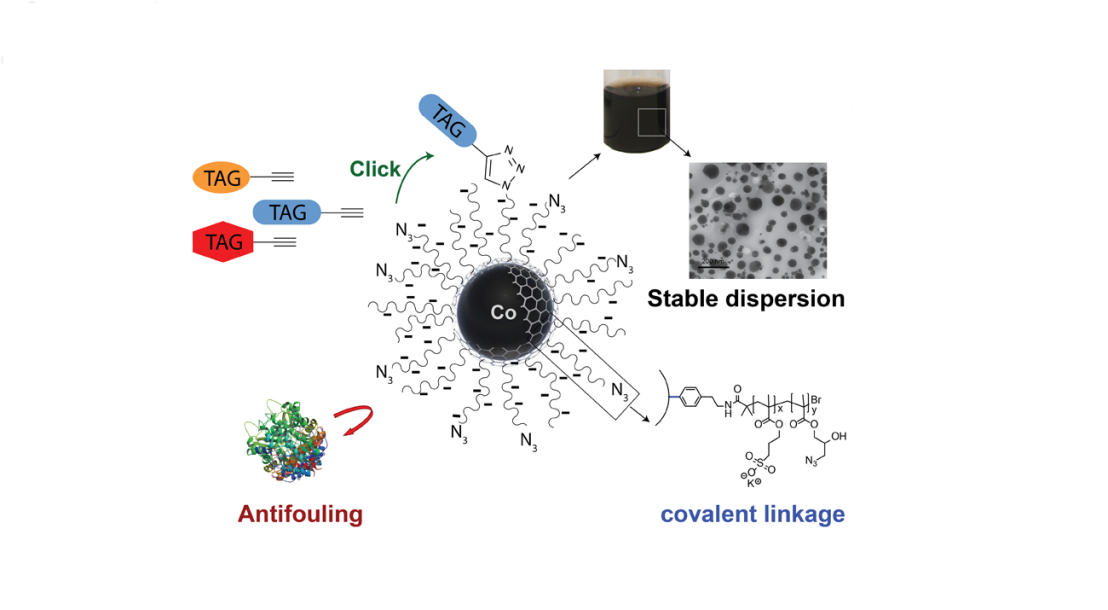
Contact: Prof. Robert Grass
In biological and bio-medical applications target molecules can be detected by magnetically based methods. Requirements that nano-sized magnetic particles need to fulfill include dispersability in aqueous solutions, minimization of unspecific binding, high magnetic properties and an efficient method for the attachment of target molecules to the surface. We therefore work on a nano-sized material on the basis of carbon coated cobalt nanoparticles from which a biocompatible coating is grown onto and then may further be functionalized with a biologically active molecule.
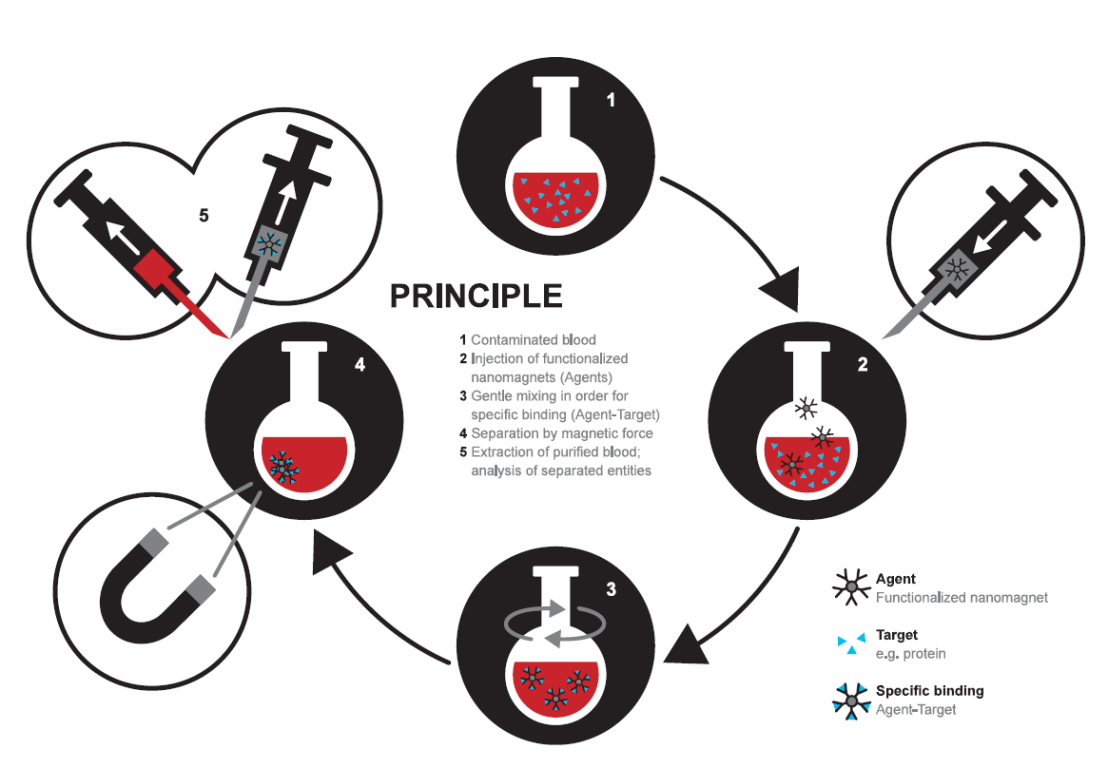
Contact: Prof. Robert Grass
The removal of cells from blood requires complicated methods for purification, identification or elimination. Therefore, we have developed biocompatible antibody functionalized magnetic nanoparticles which are able to remove specific cell-types from blood. One example is the removal of circular tumor cells (CTCs). They pose a general threat for metastasis. Our functionalized nanoparticles may be used in combination with a dialysis type blood purification. Then, such CTCs could be removed from blood and metastasis may be minimized.
Publications
external page Journal of nanobiotechnology, vol. 17, pp. 73, London: BioMed Central, 2019
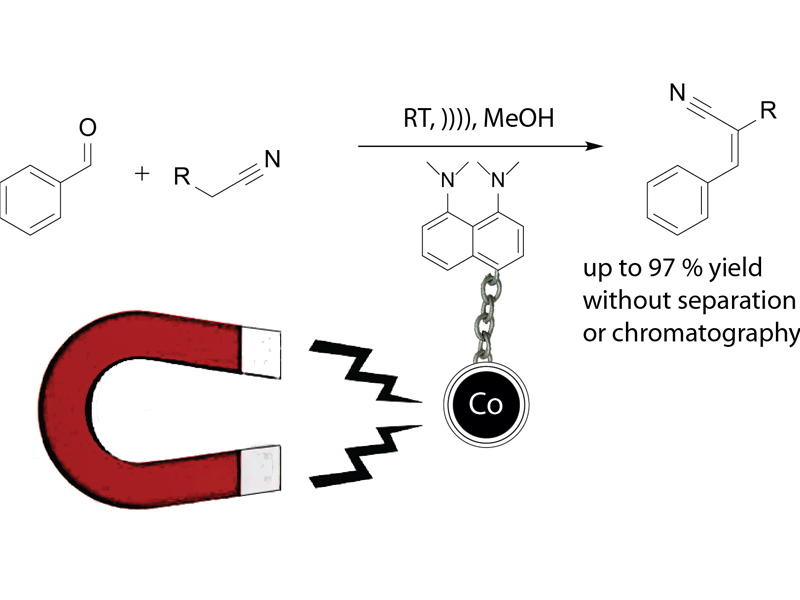
Contact: Prof. Robert Grass
Work-up in organic synthesis can be very time consuming, particularly when using reagents of solubility similar to the desired products and a low tendency to crystallize. In this respect, organic bases would strongly profit from a tremendously simplified separation.
Therefore, we synthesized a derivative of the superbasic proton sponge 1,8-bis(dimethylamino)naphthalene (DMAN) and covalently linked it to the strongest currently available nanomagnets based on carbon-coated cobalt metal nanoparticles. Using a hexamethylene diisocyanate-linker yielded a base loading of up to 0.10 ± 0.02 mMol g-1. The immobilized magnetic superbase reagent was tested in Knoevenagel and Claisen-Schmidt type condensations and showed conversions up to 99%. Recycling of the catalyst was simple and fast with insignificant decrease in catalytic activity.
Publications
- J. Org. Chem., 2014. external page Link
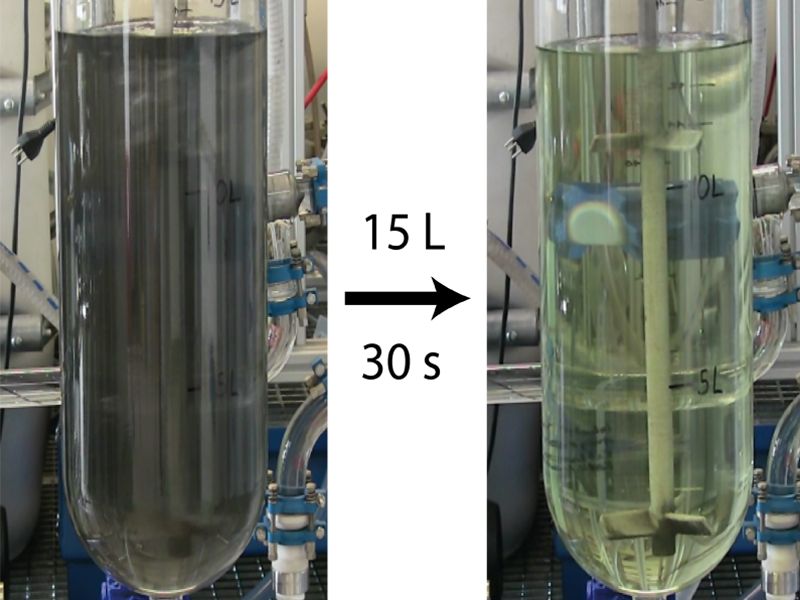
Contact: Prof. Robert Grass
In the pursuit of robust and reusable biocatalysts nanobiotechnology is currently taking a significant part. Various nano-composites, including magnetic nanoparticles, are attracting more and more attention as immobilization supports. The very high magnetization of the in-house synthesized carbon-coated cobalt nano-magnets allows for a very fast separation on large (15 L) scale making it one step closer to industry. The carbon surface gives a possibility for reliable functionalization and stable covalent attachment of a number of enzymes for applications in biotechnology, chemistry and medicine
Publications
- Bioconjugate Chem., 2014. external page Link
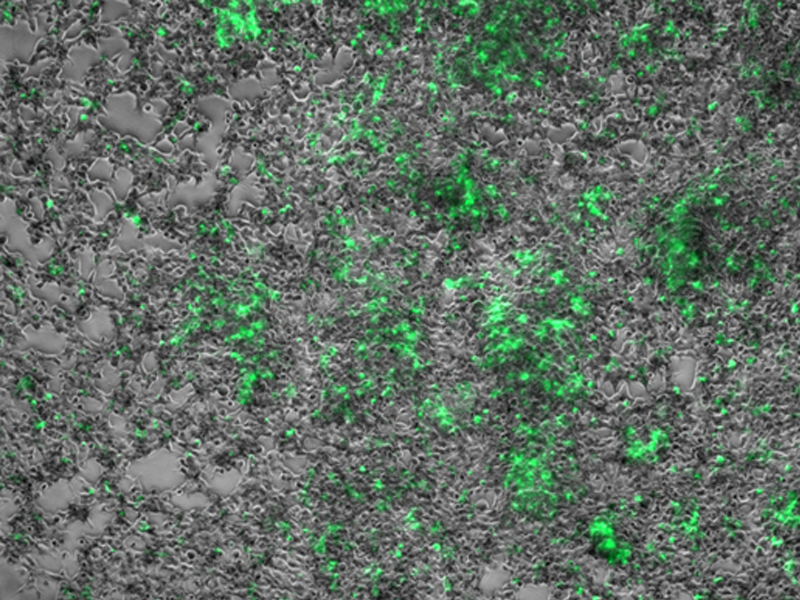
Contact: Prof. Robert Grass
Magnetofection is a transfection method in which nucleic acids are associated with magnetic particles and delivered into cells by the application of a magnetic field gradient. The magnetic forces concentrate the vectors onto the cells, allowing to obtain high efficiency of transfection with lower incubation time and vector doses in comparison to other methods. Additionally, it permits to magnetically target nucleic acids to specific location, to achieve localized transfection. The method is suitable for both in vitro and in vivo gene delivery. We are currently investigating the full potential of the technique by developing novel, optimal magnetic nanoparticles.